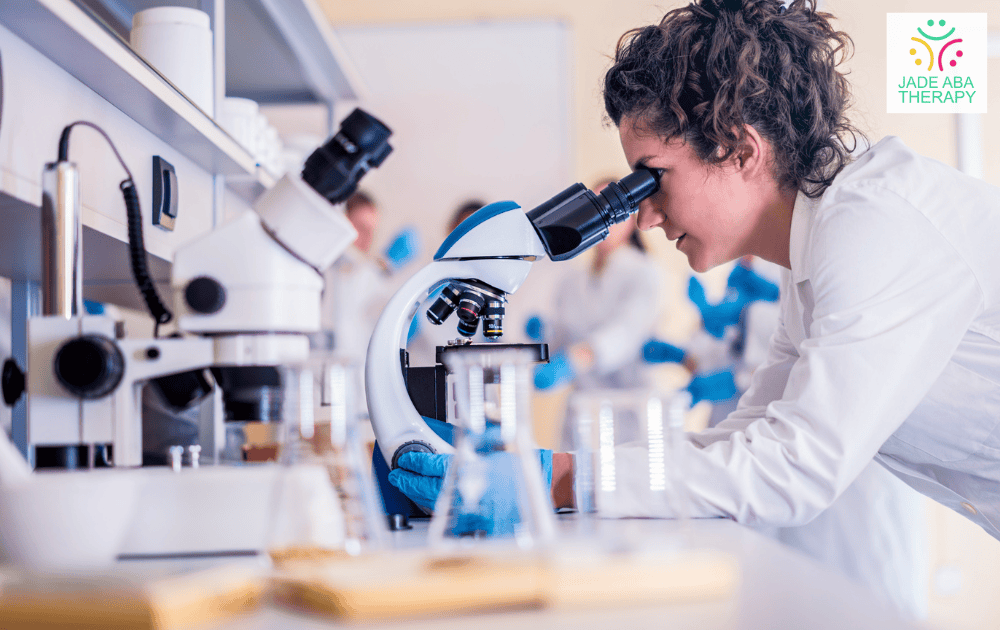Autism Spectrum Disorder (ASD) is a developmental disability that affects how individuals perceive the world and interact with others. It is characterized by persistent challenges in social communication and interaction, as well as restricted and repetitive patterns of behavior, interests, or activities.
Since autism is considered a spectrum disorder, it means that symptoms occur in different ways and with varying degrees of severity. This spectrum encompasses a wide range of abilities and disabilities among individuals with autism.
Some individuals may require significant support in their daily lives, while others may function at a higher level with less support.

The Spectrum Nature of Autism
The spectrum nature of autism reflects the diversity and individuality of people on the autism spectrum. Each person’s experience with autism is unique, and the impact of the disorder can vary greatly. Some individuals with autism may have exceptional skills or talents in specific areas, while others may face significant challenges in various aspects of their lives.
That said, autism is considered a developmental disability that results from impaired brain development caused by structural and functional abnormalities. These abnormalities begin in the fetus and continue through childhood. The specific causes of these abnormalities are not yet fully understood, though a combination of genetic and environmental factors is believed to play a role.
The spectrum nature of autism also highlights the learning challenges that individuals with autism often encounter. Autism is fundamentally a learning disability, which means that traditional educational activities may not be as effective for individuals with autism. They may have difficulty learning from experiences, predicting important events, and applying new knowledge in different contexts.

Autism as a Disability
Autism is widely recognized as a developmental disability that affects individuals in various ways. It is characterized by impaired brain development that stems from structural and functional abnormalities that begin in the fetus and continue through childhood.
These abnormalities contribute to the unique characteristics and challenges associated with autism.
Developmental Aspects
As a developmental disability, autism impacts the growth and maturation of an individual. It affects various areas of development, including social interaction, communication, behavior, and sensory processing. Autistic individuals may experience delays or differences in reaching developmental milestones, such as babbling, pointing, or making eye contact.
The developmental aspects of autism can manifest differently in each individual, resulting in a wide spectrum of abilities and challenges. Some individuals may exhibit exceptional skills or talents in specific areas, while others may face significant difficulties that require support and accommodations.
Learning Challenges
Autism is also fundamentally a learning disability. The learning challenges faced by individuals with autism can make traditional educational activities ineffective. They may struggle with processing and integrating sensory information.This can affect their ability to focus, concentrate, and learn in a traditional classroom setting.
Autistic individuals often have difficulty learning from experiences and predicting important events which can impact their ability to adapt to new situations or understand social cues. This can lead to difficulties in forming and maintaining relationships, understanding social norms, and engaging in appropriate social interactions.
However, the learning challenges associated with autism vary from person to person. Some individuals may excel in specific academic areas, while others may require specialized educational strategies, individualized support, and accommodations to optimize their learning potential.
In the United States, individuals on the autism spectrum may be eligible for various government disability benefits. These include Supplemental Security Income (SSI) and Social Security Disability Insurance (SSDI) at the federal level. Additionally, state-specific Medicaid waiver programs cater to the needs of people with developmental disabilities, including autism.

Legal and Support Framework
When it comes to autism, there is a legal and support framework in place to provide assistance and accommodations for individuals with autism and their families. Let’s look at some of these disability benefits and Medicaid waivers which are part of the support system available for those affected by autism.
Disability Benefits
The Social Security Administration (SSA) offers disability benefits for individuals with autism who meet specific eligibility criteria. These benefits aim to provide financial support to help individuals with autism and their families manage the challenges associated with the condition.
For parents of children under 18 with autism, Supplemental Security Income (SSI) benefits may be available. These benefits are based on financial need and can help cover the costs of necessary support and services.
Meanwhile, adults with autism who are 18 or older may qualify for either SSI or Social Security Disability Insurance (SSDI) benefits. SSDI benefits are based on work history and are available to individuals who have paid into the Social Security system through their employment.
It’s important to note that eligibility for disability benefits is determined by the severity of the individual’s condition and how it impacts their ability to function in daily life. The application process involves providing medical documentation and other relevant information to support the claim.
Medicaid Waivers
Medicaid waivers are another crucial aspect of the support framework for individuals with autism. These waivers are available in most states and aim to provide the necessary support to keep disabled individuals, including those with autism, in the community instead of in an institution.
Medicaid waivers vary by state and may have different names, but they generally provide services and supports not typically covered by traditional Medicaid. These services include respite care, behavioral therapy, occupational therapy, and more.
The purpose of these waivers is to ensure that individuals with autism have access to the care and resources they need to thrive. By providing these supports, individuals with autism can receive the assistance necessary to lead fulfilling lives within their communities.
That said, it’s important to research and understand specific Medicaid waiver programs available in your state, as eligibility requirements and services can differ. Consulting with a local autism organization or disability service provider can help navigate the process and provide guidance on available resources.
Autism Statistics
To gain a better understanding of the prevalence and characteristics of autism, let’s explore some key statistics related to autism spectrum disorder (ASD). It’s important to note that these statistics are continually evolving as more research and awareness are conducted.

ASD occurs in all racial, ethnic, and socioeconomic groups, highlighting its presence across diverse populations. Additionally, autism is more than 4 times more common among boys than girls. However, it’s crucial to remember that autism can impact individuals of any gender.
Diagnosis and Age of Onset
Autism is a developmental disability that typically appears early in life, although it can be diagnosed at any time, including adulthood. Many children receive an autism diagnosis before the age of 2, but some individuals may not receive a diagnosis until later in life.
Early intervention is essential for children with autism, as research suggests that early intervention services can significantly improve a child’s development. The earlier the diagnosis and intervention, the better the chances of supporting the child in reaching their full potential. Over time, the understanding and diagnosis of autism have improved, leading to changes in the co-diagnosis rates.
In the 1980s, around 69% of people with autism also had a co-diagnosis of intellectual disability. However, by 2014, this number decreased to 30%. This shift highlights the recognition of the broad spectrum nature of autism where individuals may have varying levels of intellectual ability.

Autism and Employment
When it comes to employment, individuals on the autism spectrum face unique challenges which can make it difficult for them to attain competitive integrated employment opportunities. This results in significant rates of unemployment and underemployment. However, various resources and support are available to help individuals with autism navigate the job market and succeed in the workplace.
Employment Challenges
One of the primary challenges faced by individuals with autism is finding suitable employment. The characteristics associated with autism, such as difficulties with social interactions and communication, can impact their ability to navigate the job search process effectively.
Additionally, sensory sensitivities and a need for routine and predictability may require accommodations in the workplace. Due to these challenges, individuals on the autism spectrum often encounter barriers in completing postsecondary education, accessing healthcare, and achieving community living integration.
Support Resources
To address the employment challenges faced by individuals with autism, employers, service providers, and policymakers have been working to enhance access to employment opportunities and create supportive environments. Employers have been adapting their recruitment, hiring, and onboarding policies to accommodate the diverse talents of individuals on the autism spectrum.
Initiatives such as the Neurodiversity @ Work Employer Roundtable provide resources and guidance for employers seeking to support employees with autism. These resources help employers create inclusive work environments that leverage the strengths and abilities of individuals with autism.
Service providers also play a crucial role in assisting autistic individuals to achieve workplace success. Resources like “F.I.T. for Success on the Job: Creating Successful Employment for Individuals with Autism Spectrum Disorder” provide guidance and strategies for service providers to support individuals with autism in finding and maintaining employment.
Policymakers are also actively involved in developing reports and initiatives aimed at improving the transition to employment, postsecondary education, and community living for youth and young adults with autism. These efforts aim to create a more inclusive society that provides equal opportunities for individuals on the autism spectrum.
For individuals with autism who are pursuing higher education or transitioning to adulthood, there are resources available to support their journey. The College Autism Network and Transition Truths: Developmental Disabilities are examples of resources that provide guidance, career planning assistance, and support for college students and teens on the autism spectrum.

Early Intervention and Research
Early intervention and research play a crucial role in understanding and supporting individuals on the spectrum. Research suggests that early intervention services can significantly improve a child’s development, emphasizing the importance of receiving services as soon as possible to ensure they reach their full potential.
The American Academy of Pediatrics (AAP) recommends behavioral and developmental screenings at 9, 18, and 30 months, with specific screenings for Autism Spectrum Disorder (ASD) at 18 and 24 months. These screenings help identify any potential developmental concerns, including ASD. If a child shows any signs of concern, additional screening, evaluation, and interventions may be suggested.
Research Initiatives
The field of autism research continues to evolve, with ongoing initiatives aimed at deepening our understanding of the disorder and developing effective interventions. The National Institute of Neurological Disorders and Stroke (NINDS) supports research for ASD through the Autism Centers of Excellence (ACE).
The ACE centers focus on various aspects, including risks and factors during pregnancy and early infancy, such as genetics, neurological components of brain development and performance, physical factors, and environmental influences. Through early intervention and ongoing research, we can provide the necessary support and resources to individuals with autism, helping them thrive and reach their full potential.
Sources:
https://www.dol.gov/agencies/odep/program-areas/autism
https://www.cdc.gov/ncbddd/autism/facts.html
https://www.healthline.com/health/autism/is-autism-a-disability
https://www.autismparentingmagazine.com/autism-disability
https://www.therecoveryvillage.com/mental-health/autism/is-autism-a-disability